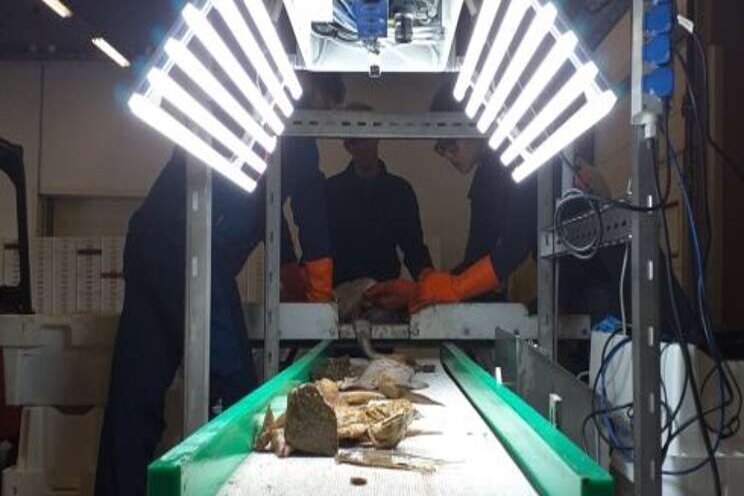Computers recognize fish with deep learning
Added on 26 March 2020

Fully Documented Fisheries (FDF) is a joint project of Wageningen Marine Research (WMR), Wageningen Plant Research, Wageningen University & Research (WUR) and VisNed, supported by the Ministry of Agriculture, Nature and Food Quality. The aim is to find an alternative to the labor-intensive landing obligation. To this end, WMR contacted Agro Food Robotics, a program within WUR. The Business Unit Greenhouse Horticulture of WUR was also involved. After all, this group has experience with automatic image recognition in the agricultural and food sector (for example, tomatoes, potatoes and flowers).
Monitoring fish with cameras
After the sizeable fish is taken off the conveyor belt on board, a camera checks whether there is undersized fish, fish species that are not being fished for, other animals or, for example, a piece of wood. In the long term, this information will therefore provide a more complete picture of the catch of the fishing sector and agreements can be made about by-catch.
The differences between two sectors
There is little difference between image recognition of a tomato or a fish. But there are some important differences. For example, the conditions on a ship are different: due to the salt water, corrosion lurks. The hardware must therefore be both corrosion and water resistant. In addition, the image recognition software must learn to recognize fish. By collecting a large amount of training data (images of real fish), the software can use deep learning to identify, measure and weigh fish and by-catch in the near future.
Source and Photo Courtesy of Wageningen University & Research
Source: Wageningen University & Research
More news















